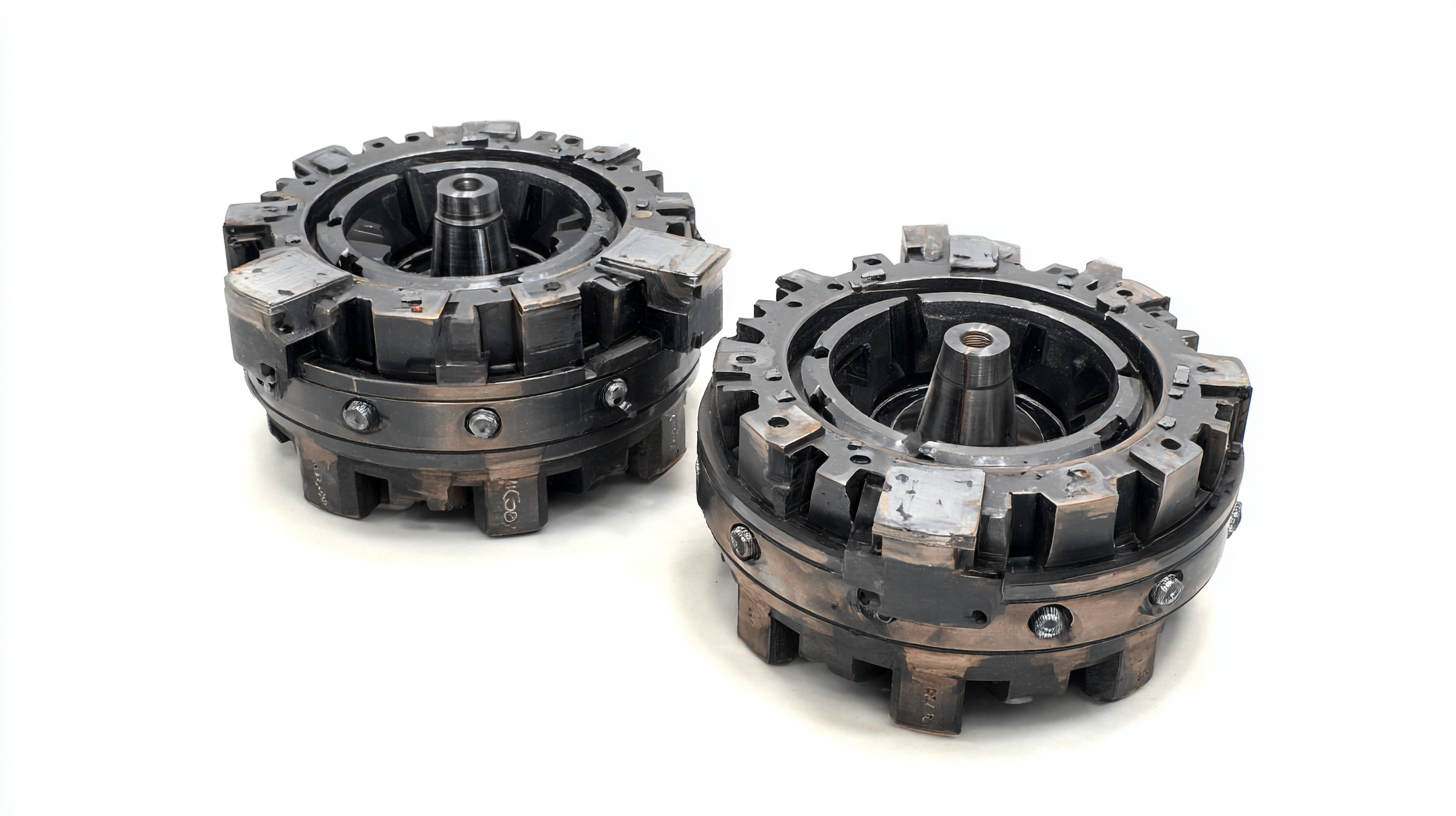
-
Home
-
About Us
-
Products
-
News
-
Blog
-
Contact Us
Leave Your Message

In the rapidly evolving mining industry, the significance of high-quality machinery is paramount, and at the forefront of this equipment is the Primary Gyratory Crusher Parts. As global demand for mineral resources continues to soar, the role of these crucial components cannot be overstated. With China emerging as a manufacturing powerhouse, the phrase "中国智造,全球热销,品质保证" encapsulates the essence of innovative production and quality assurance that modern mining operations depend on. This blog will explore the advancements in Primary Gyratory Crusher Parts, focusing on their durability, efficiency, and adaptability to meet the challenges of tomorrow's mining landscape. We will delve into how China's manufacturing prowess is setting new standards in the quality and performance of these essential parts, ensuring they meet the rigorous demands of global markets while driving the future of the mining industry.

The mining industry heavily relies on primary gyratory crushers for their ability to handle large volumes of materials. However, the effectiveness of these operations is increasingly influenced by the import and export certifications of their parts. According to a recent report by Global Market Insights, the demand for certified mining equipment, including gyratory crusher components, is projected to grow by over 6% annually through 2027. This growth underscores the importance of adhering to international standards, ensuring quality and safety in mining operations.

Certification processes affect the supply chain, as many regions enforce strict regulations to ensure equipment safety and efficiency. The International Organization for Standardization (ISO) has established various standards that parts manufacturers must meet to cater to global markets. For instance, ISO 9001 outlines the criteria for a quality management system, which is vital for manufacturers aiming to maintain their competitive edge. As compliance becomes a prerequisite for market entry, collaborations between manufacturers and certification bodies will become increasingly essential, shaping the future landscape of primary gyratory crusher parts in the mining sector.
In the rapidly evolving mining industry, the importance of adhering to industry standards and regulations for primary gyratory crusher components cannot be overstated. According to a report by Smith & Associates, approximately 70% of the operational efficiency of a primary gyratory crusher stems from the quality and compliance of its parts. The International Organization for Standardization (ISO) has established specific standards, such as ISO 9001, which focus on quality management systems and are critical in ensuring the reliability and performance of crusher components.
Moreover, the implementation of safety regulations, particularly those set forth by the Mine Safety and Health Administration (MSHA), plays a significant role in shaping the manufacturing and use of these crucial parts. A study conducted by the Mining Equipment Association reveals that companies adhering to these regulations not only experience fewer accidents but also realize a 15% increase in productivity. As the industry pushes towards innovation and sustainability, the alignment with such standards is essential for manufacturers looking to maintain a competitive edge while ensuring the safety and efficiency of their operations.
This chart illustrates the market share distribution of various materials used in primary gyratory crusher parts in the mining industry. Steel alloys dominate the market, followed by copper alloys and rubber liners, indicating the diverse range of materials utilized within this field.
The mining industry is witnessing significant advancements in technology, particularly in primary gyratory crushers, which are essential for enhancing operational efficiency. Recent simulations and optimizations have demonstrated impressive gains in productivity and power density, with increases of 36% and 26%, respectively. Such enhancements not only improve the performance of these machines but also contribute to more sustainable operations by optimizing energy consumption and reducing waste.
Moreover, leading manufacturers are continually innovating their product lines to adapt to the evolving demands of the market. The introduction of new crushing technologies, including high pressure and eccentric roll crushers, signals a shift towards more effective and eco-friendly methods of material processing. As the industry moves forward, these technological solutions will play a pivotal role in shaping the future of primary gyratory crushers, making them even more efficient and capable of meeting the rigorous demands of modern mining operations.
The global market for primary gyratory crusher parts is witnessing significant transformations driven by evolving demand and supply dynamics. As mining operations expand and become more sophisticated, the need for reliable and efficient crushing equipment is paramount. Gyratory crushers, known for their robust construction and high throughput capabilities, are increasingly being favored by miners seeking to enhance productivity while reducing operational downtime. This shift is anticipated to spur innovation in the design and manufacturing of crusher parts, aligning them with the industry's quest for sustainability and efficiency.
Furthermore, supply chain considerations are becoming critical as the mining industry's geographical challenges grow. The demand for crusher parts is not just about quantity; it is about sourcing high-quality components that can withstand harsh mining environments. Companies are now looking toward strategic partnerships that can ensure consistent supply, while also investing in advanced materials and technologies to prolong the lifespan of these parts. As the market evolves, a careful balance between demand for cutting-edge solutions and the stability of supply chains will be essential in shaping the future landscape of gyratory crusher parts.

The mining industry is increasingly focusing on sustainability, and the manufacturing of primary gyratory crusher parts is no exception. Innovations in materials and production processes are pivotal in reducing the environmental impact of machinery used in mining. By adopting eco-friendly materials, manufacturers can significantly lower the carbon footprint associated with producing these crucial components. This shift not only benefits the environment but can also lead to cost savings over time through efficient resource utilization.
Tip: When selecting materials for gyratory crusher components, consider those that are not only durable but also recyclable. Implementing designs that facilitate recycling can further enhance sustainability efforts.
Moreover, implementing energy-efficient manufacturing processes can lead to substantial reductions in energy consumption. Techniques such as lean manufacturing and the use of renewable energy sources in production can pave the way for a greener mining operation. As companies embrace these practices, they contribute to the overall sustainability goals of the industry.
Tip: Regularly monitor and audit your manufacturing processes to identify areas for improvement. Small changes can lead to significant enhancements in energy efficiency and waste reduction, reinforcing your commitment to sustainability in the mining sector.